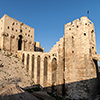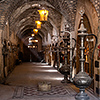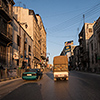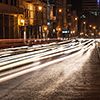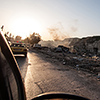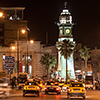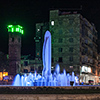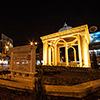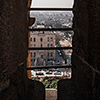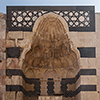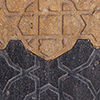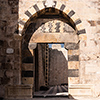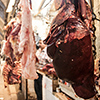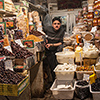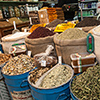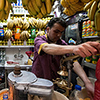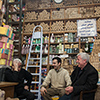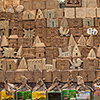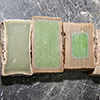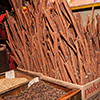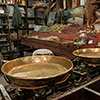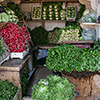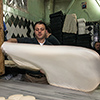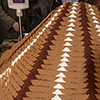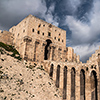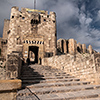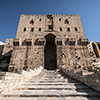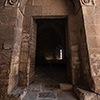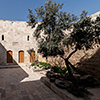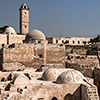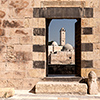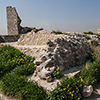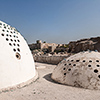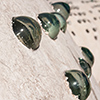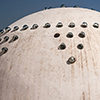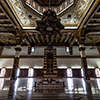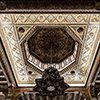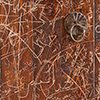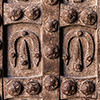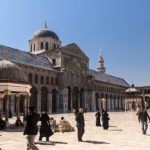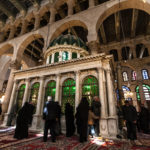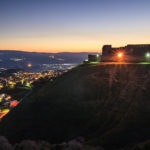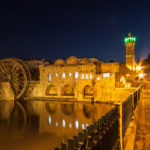Aleppo – Turbulent, chaotic Soap Paradise
From time immemorial the north Syrian city of Aleppo (حلب), the former Aramaic Halab, is a centre of trading. Today this glorious history is still pretty much alive at the Medina, the old town, where the fairytale bazar and the mighty citadel tell stories from ancient times. Though the city can be quite a bustle, in particular when it comes to traffic. Then the only quiet place is a hammam, where you can indulge yourself in the famous hand-scooped Aleppo soap.
First and foremost we Germans know Aleppo from the commitment of GTZ, a company for technical assistance, supporting, helping and leading the reconstruction of Aleppo’s Medina, that is the old town. Having visited the giant wooden Noria water wheels of Hama I sit next to Afik, who rides on the same bus to Aleppo. He’s a bus driver and together we have a chat about God and the world, about the Umayyad Empire, pistachio trees looking dead in winter times and of course we, and later the whole bus, discuss the current US aggression in Iraq.
Back then to me Afik’s sounded too dramatic when saying that “…that those people will bring disaster upon us!” Well, time gave proof that Afik was right as the Yanks-led Coalition of the Willing destabilised Iraq radical and far reaching making that country and situation becoming an ideal breeding grounds for IS (former ISIS) and its rise. During the civil war many Syrians and especially Kurds stayed in their houses and villages, but now they are forced to escape large-scale to Turkey.
But enough coming to terms with the present and back to former Aleppo, that every visitor surely surprises with its bustle of cars. Somehow traffic over there is heavier and more hectic than elsewhere in the country as going across the main road becomes an adventure like deer crossing an alley late night, chased by cars. Like in many other Arabic cities best orientation provides the Clock Tower, that symbolises the beginning of Aleppo’s older neighbourhoods. From there the famous Aleppo Souk as well as the Umayyad mosque and the mighty citadel are only a stone’s throw away.
Even today I could give myself severe kicks as the Aleppo Souk was so fascinating, captivating and inspiring that I completely forgot about photography. The roof bazar has plenty of narrow little lanes and feels warm and friendly like a womb where it is impossible to elude from the smell of thousands of spices and fresh coffee. Like every other bazar the Aleppo Souk is divided into quarters providing meat or cloths or spices. At the latter quarter I met Aladin in his little grocery stall selling original self-made Aleppine soap.
After the talks with him I was a lifetime expert in soap as Aladin was visibly delighted to fill my brain with knowledge. He explained the fine difference of storing the soap or how different additional oils get involved. It’s a fact that soap made from natural oils like olive, laurel, cumin with additions like mint, pine or rose oil are something 100% natural, something that boost and cares the skin.
Some of you might know the movie “Fight Club” and the way they produced soap, by stealing human fat being left over from liposuction. Well, industrial soap production isn’t really far away from that as they often use fat-rich slaughterhouse waste for saponification. Using that stuff under the shower you’re literally washing yourself with animals.
Very young soaps being not older than 3 years are not meant for skin contact as they contain too many irritants yet. You can recognise the soap’s age by its look and hardness, that means the wrinklier and harder is the better and older. Also you can notice the good soap by the small green stripe inside when cutting it. Fine soaps may be younger though as their additional oil components allow a shorter maturing.
Not far away from the bazar is the mighty citadel, that serves as a place of defence since Bronze Age, meaning the strategically important hill itself and not its current fortified appearance. The well-fortified bastion at the bottom of the citadel hill is also the main entrance. Its bulky ironwork gate gives an impression how much force was needed to break this “bulkhead”. Having reached the top of the citadel you’ll find mish-mash of things being in good as well as bad condition and spread all over the place.
To make it short: conservators will have to do a lot to make good what the 1822 earthquake damaged. Walking up the bastion gangway you can find an already restored hall to the left. Craftsmen showed their abilities by bringing back the wonderful wooden as well as marble embellishments. Also the citadel’s hamam is accessible, but over there the craftsmen have still plenty to do.
During the Syrian civil war the Aleppo citadel was heavily damaged at it did what a citadel has to do, that is providing protection as well as a strategic advantage. The Crusader fortification Krak des Chevaliers faced the same fate, unfortunately. Even the historically unique minaret of Aleppo’s Umayyad mosque got completely destroyed as tanks killed snipers sitting in the tower’s lookout with shell fire. The 11th century building is irretrievably lost.
